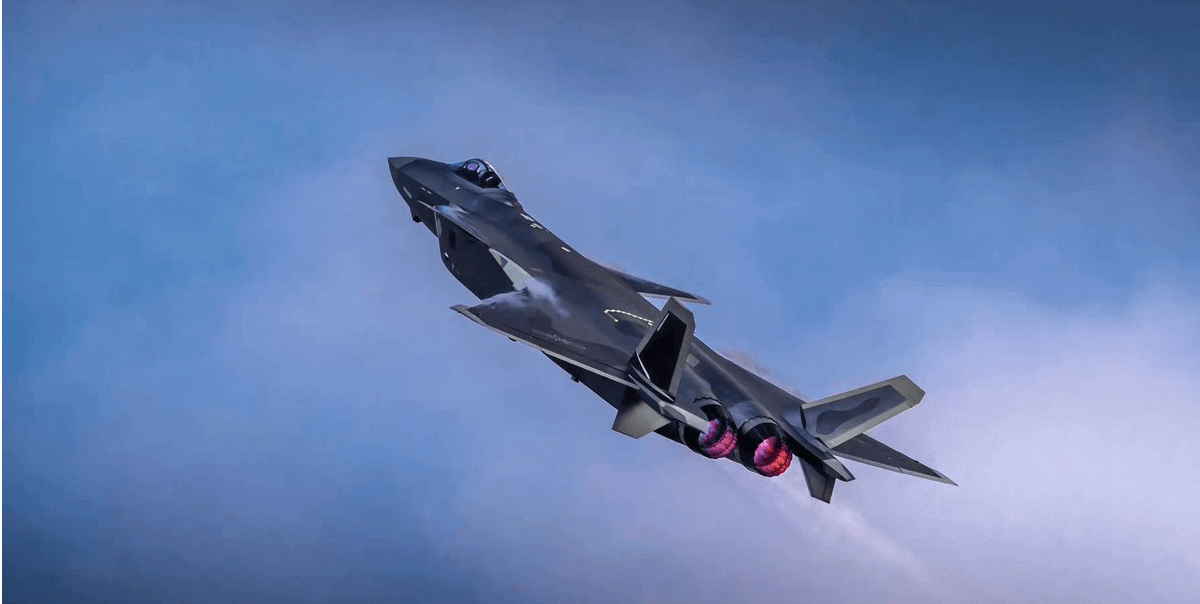The Chinese People’s Liberation Army Air Force (PLAAF) wants to send its fighters up faster without shutting down their engines to get that “one-minute” advantage over the enemy.
PLAAF researchers want to replicate the functioning of a Formula 1 racing team’s pit crew for military purposes to further refine the logistical and maintenance processes of aircraft – a critical factor in any fight against a near-peer adversary.
In a video released by the PLAAF as a part of a series featuring the work of its members and combatants across various branches, a young technocrat talks about his project that has mastered the technology to turn around military aircraft without having to shut their engines off.
The logistical and manpower constraints in a big conventional war have been the bane of many air forces, most recently addressed by the US Air Force.
At the latest Weapons System Evaluation Program 22.12 that concluded in September, teams from the 94th Fighter Squadron and 94th Fighter Generation Squadrons were able to load and fire a record-breaking 28 missiles across an F-22 unit.
EurAsian Times had reported how one of the conditions of the drills was to perform with a reduced ground crew, indicating that the USAF is seriously preparing for operating under constrained logistical and manpower environments, usually a very realistic scenario in war.
The Indian Air Force (IAF) also addressed the same logistical and techno-industrial element of bigger full-scale conventional wars in Exercise Gagan Shakti in 2018. The aim then was “real-time coordination, deployment, and employment of air power in a short and intense battle scenario.”
The IAF achieved 80% serviceability of aircraft and 97% of radars and surface-to-air weapons, while the “dispatch rate of combat assets” was 95%. But the PLAAF featurette indicated this had more to do with keeping the fighter aircraft on the ground for the minimum time, going by the effort behind the project.
Formula 1 ‘Turnaround’ On A Military Runway?
Wang Heng, a lab director of the PLA Air Force Research Institute, observed how to save time, Formula One racing cars have their tires changed and are refueled without stalling the race.
He then set about researching to replicate the technology for fighters and got the effort approved as an officially funded project.
“It occurred to me whether this could be applied to a fighter jet so that the jet could also get refueled and armed with missiles without the engine shutdown,” the English subtitles of his interview in Chinese said. The team concluded its efforts, and the technology was tested at an airbase in western Guangdong.
“If we can outrun the opponent by one minute from take-off, transition to second take-off, we will take the pre-emptive opportunity and change the battle situation,” Wang added. In the video, Wang makes presentations to his team members and interacts with PLAAF pilots and ground crew.

“The application of the research achievement has greatly shortened the time for aircraft to take off again after landing, serving to be of strong support for improving the strike frequency and efficiency of warplanes,” the commentary in the video said.
Former IAF Jaguar pilot Squadron Leader Vijainder K. Thakur didn’t find anything different and indicated that it seemed to be a simple ‘hot refueling’ capability.
“The LCA Tejas has hot refueling ability. It can cut down the turnaround time, which can be important for air defense (AD) fighters,” Thakur said.
The Hindustan Aeronautics Limited (HAL) carried out the first hot refueling trials on the Tejas LSP8 aircraft in February 2018 as a part of its Final Operational Clearance (FOC). This would make the LCA the first aircraft in the history of the IAF with a ‘hot refueling’ capability.
- The author can be reached at satamp@gmail.com
- Follow EurAsian Times on Google News




